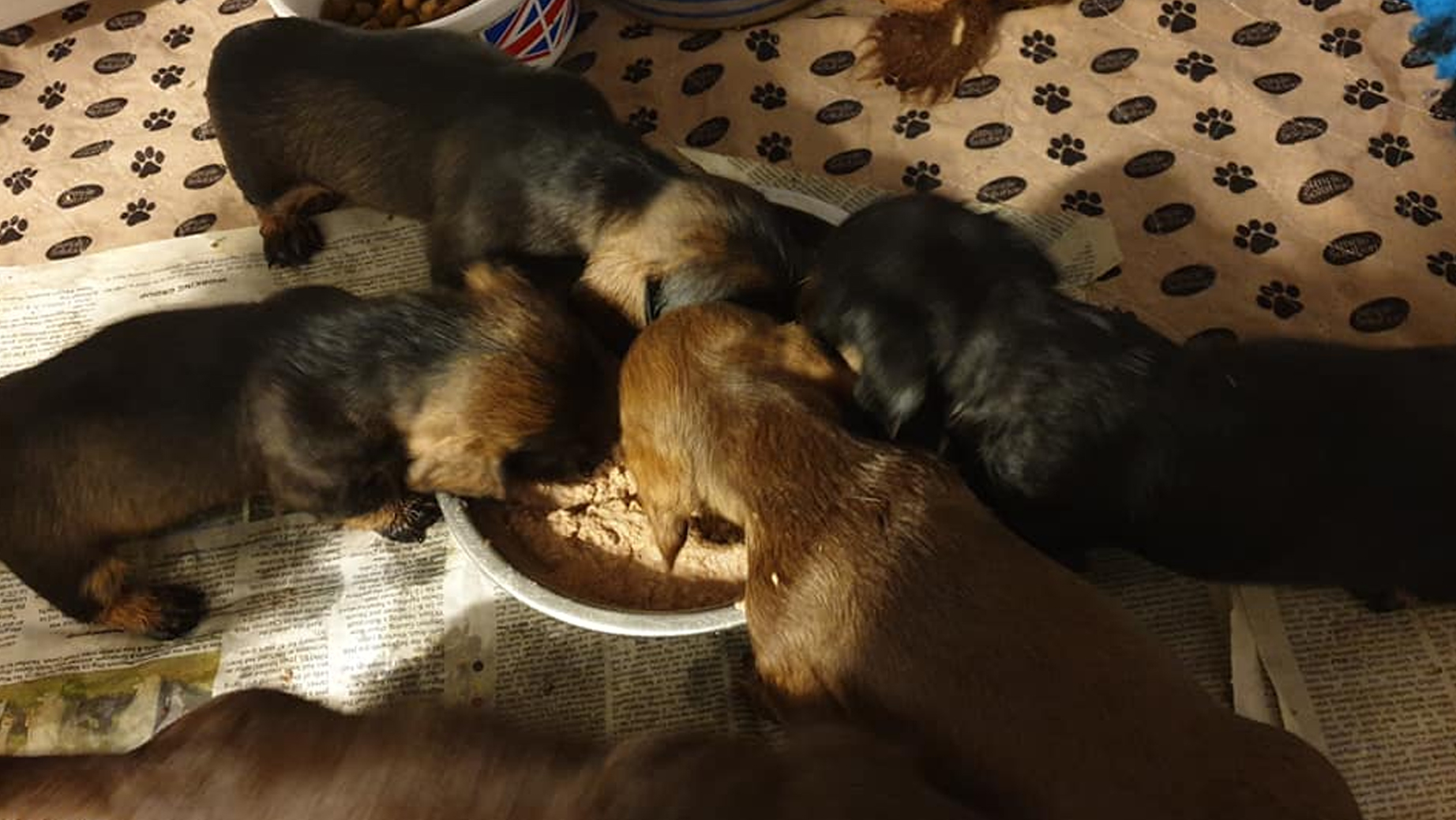Health Problems in Dachshunds
Lafora's Disease (Lafora's Epilepsy)
There is a condition which is found predominantly in Miniature Wire Haired Dachshunds called 'Lafora’s Epilepsy' disease.
Lafora’s disease is an inherited, late onset, progressive myoclonic epilepsy. This degenerative neurological disease has been identified in Miniature Wirehaired Dachshunds but it has also been known to be in smooth and long haired Dachshunds. The disease is characterized by myoconus. Typically this looks like a backwards shuddering/jerking of the head when there is movement towards the eyes, when light intensity increases, when there is flickering light (e.g. television) or at sudden noises. Some dogs also develop epilepsy. Middle aged to older dogs (age range 5-8 years) of both sexes can be affected. Unfortunately there is not a completely effective treatment, however many are improved on anti-epileptic drugs.
Although the myoclonus (jerking) and epilepsy can get worse it does not appear to shorten the life of affected dogs; they do not appear to develop the severe neurological signs ( status epilepticus and death) that characterizes the human form of the disease, which occurs because affected dogs are missing a vital enzyme involved with carbohydrate metabolism. This results in the storage of a polyglucasan storage material (Lafora bodies) within the brain and some other tissues. The material interferes with synaptic transmission. Diagnosis is by a dna test.
There have been cases of Dementia which progresses after time. Lafora's Disease can also cause increasing blindness and deafness too.
The abnormal gene which causes this disease has been identified and a DNA test is now available.
If at least one of the parents of your puppy is either tested clear or hereditary clear for this disease your puppy will remain healthy.
Do not buy a puppy if not as there is a high risk of the disease as 50% of the breed carry the gene. If two are bred together 1 in 4 of the pups could be affected and suffer from this.
Intervertebral Disk Disease (IVDD)
Probably the main health problem with Miniature Dachshunds is a condition called Intervertebral Disc Disease (IVDD). This disease is caused with the weakening of the disks between the vertebrae, in the spine. This can be caused by poor handling, jumping from height, over exercise, increased weight or strain on the spine or the main cause is usually due to obesity. Obesity is a very common cause basically because Dachshunds will eat practically anything put in front of them.
There is a high degree of inheritance to this disease and some varieties of dachshunds suffer more often than others.
Some suggestions for helping prevent further injury or pain to your Miniature Dachshund's spine are confining your dog to their crate / cage to prevent any undue movement or stress on their spine. Drugs that can be prescribed by your vet to ease pain are anti-inflammatory medication, steroids or non-steroidal anti-inflammatory drugs like carprofen and meloxicam. If your Dachshund suffers from chronic back pain they can also be prescribed with tramadol. In more severe cases the disk contents can be removed. In the event of the worst case of paralysis your Miniature Dachshund may require a cart to get them around.
There has recently (01/12/16) been a new test set up for young breeding stock (2-4 years old) which may help us to know the potential risk of ivdd and the hereditary nature of how it affects our dogs. But it is in it's infant stages and not many dogs have been tested yet.
Progressive Retinal Atrophy (PRA)
A common problem with Miniature Dachshunds and many other breeds of dog is Progressive Retinal Atrophy (PRA) or Progressive Retinal Degeneration (PRD). This disease can affect some breeds of dog early in their life. PRA is a family of diseases which gradually degrade the retina. It will affect your dog's ability to see in the dark or low light levels. If your Dachshund's environment remains constant he/she should be able to adapt well to this disability. You can recognise PRA/PRD forming by checking your dog's eyes for increasingly dilated pupils which will cause a 'shine' to their eyes. The lens of the eye may appear cloudy or opaque, resulting in a cataract.
There is a DNA test for the disease and if buying a puppy make sure that at least one parent is either tested clear or hereditary clear of the disease.
If one of your pup's parents is tested clear your puppy should remain healthy as two genes for the disease are needed to be affected by it.



